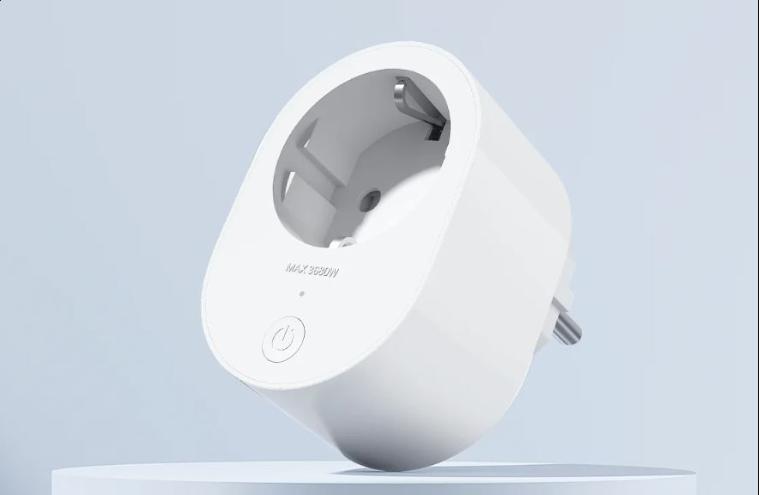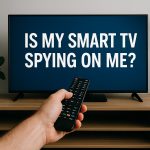Transforming your home into a smart, automated haven doesn’t require a big investment or technical expertise. Smart plugs are one of the easiest and most affordable ways to start your DIY journey. In this guide, we’ll walk you through installing and setting up smart plugs, highlight their benefits, and provide tips to get the most out of these versatile devices.
What Are Smart Plugs?
Smart plugs are compact devices that connect to your existing outlets and allow you to control connected devices remotely. They’re perfect for automating everyday appliances like lamps, coffee makers, and fans. With app or voice control, you can schedule operations, monitor energy usage, and even integrate them with other smart devices.
Step-by-Step Guide to a Smart Plug installation
Step 1: Choose the Right Smart Plug
Before purchasing, ensure the smart plug is compatible with your ecosystem, whether it’s Amazon Alexa, Google Assistant, or Apple HomeKit. Some models also support Matter for broader integration.
Recommended Smart Plugs:
- TP-Link Kasa Smart Plug: Affordable and feature-rich.
- Amazon Smart Plug: Seamless integration with Alexa.
- Meross Smart Plug: Great for HomeKit users.
- Xiaomi Smart Plug 2 (Wi-Fi) (main image)
Step 2: Unbox and Inspect the Smart Plug
Unpack the smart plug and check for any damage. Read the included manual for specific setup instructions.
Step 3: Connect the Plug to a Power Outlet
Insert the smart plug into a wall outlet. Ensure it’s in a location with a strong Wi-Fi signal.
Step 4: Download the Companion App
Most smart plugs require a companion app for setup. Popular apps include:
- Kasa Smart for TP-Link plugs.
- Amazon Alexa for Amazon plugs.
- Meross app for Meross devices.
Follow the app’s instructions to create an account or log in.
Step 5: Pair the Smart Plug with Your Wi-Fi
During the setup process, connect the smart plug to your Wi-Fi network. Ensure you use a 2.4 GHz network, as many smart plugs don’t support 5 GHz.
Step 6: Test the Smart Plug
Once connected, test the plug by turning a connected device on and off using the app.
Top Uses for Smart Plugs
- Automating Lights: Control lamps or decorative lights to match your schedule or create ambiance.
- Energy Management: Monitor the energy consumption of devices to save on electricity bills.
- Seasonal Decor: Automate holiday lights for convenience and energy savings.
- Appliance Scheduling: Set your coffee maker or space heater to turn on before you wake up.
- Away Mode: Simulate presence by turning lights or devices on and off while you’re out.
Pro Tips for Smart Plug Efficiency
- Group Plugs: Use the app to create groups and control multiple plugs simultaneously.
- Integrate with Routines: Link smart plugs with voice assistants for hands-free control.
- Use Schedules: Maximize energy savings by scheduling devices to turn off during idle times.
- Check Compatibility: Ensure your plug supports the wattage and type of device you’re automating.
Troubleshooting Common Issues
- Wi-Fi Connection Problems: Ensure the plug is within range of your router and uses a 2.4 GHz network.
- Device Not Responding: Restart the smart plug and check for firmware updates.
- Integration Issues: Verify permissions and re-link the plug to your voice assistant or smart home hub.
Final thoughts
Smart plugs are an easy and cost-effective way to dip your toes into home automation. With simple installation and versatile functionality, they’re perfect for anyone looking to make their daily routines more convenient. Start with one or two plugs, experiment with automation, and watch as your home becomes smarter with every device you connect. Happy automating!
- Local AI in Smart Homes: What Happens When the Cloud Goes Down?
 In the age of cloud computing and always-connected devices, smart homes have become increasingly dependent on the internet. But what happens when your connection drops? That’s where local AI comes into play. This article explores the benefits, limitations, and future of local AI in smart homes systems—and why it might be the key to a…
In the age of cloud computing and always-connected devices, smart homes have become increasingly dependent on the internet. But what happens when your connection drops? That’s where local AI comes into play. This article explores the benefits, limitations, and future of local AI in smart homes systems—and why it might be the key to a… - Hidden Features of Your Smart TV You’re Probably Not Using — But Should
 Smart TVs have come a long way since their early days. While most people use them for Netflix, YouTube, and the occasional screen mirroring session, today’s smart TVs pack a wealth of features that often go unnoticed. These hidden gems can transform your entertainment experience, improve convenience, and even tighten your home security. In this…
Smart TVs have come a long way since their early days. While most people use them for Netflix, YouTube, and the occasional screen mirroring session, today’s smart TVs pack a wealth of features that often go unnoticed. These hidden gems can transform your entertainment experience, improve convenience, and even tighten your home security. In this… - Is My Smart TV Spying on Me? How to Protect Your Privacy
 Smart TV Privacy – In today’s connected homes, smart TVs are as common as coffee makers — but have you ever wondered if your smart TV is watching you back? It’s not just paranoia. With microphones, cameras, and internet connections, smart TVs can pose serious privacy risks if not properly managed. Let’s dive into what…
Smart TV Privacy – In today’s connected homes, smart TVs are as common as coffee makers — but have you ever wondered if your smart TV is watching you back? It’s not just paranoia. With microphones, cameras, and internet connections, smart TVs can pose serious privacy risks if not properly managed. Let’s dive into what… - Smart Bathrooms: Hygiene and Automation Combined
 In 2025, the bathroom is no longer just a functional space—it’s a hub of innovation. With the rise of smart home technology, bathrooms are getting a high-tech makeover. From automatic faucets to AI-powered mirrors, the smart bathroom combines hygiene and automation to create a cleaner, more convenient daily experience. Let’s explore what this transformation means,…
In 2025, the bathroom is no longer just a functional space—it’s a hub of innovation. With the rise of smart home technology, bathrooms are getting a high-tech makeover. From automatic faucets to AI-powered mirrors, the smart bathroom combines hygiene and automation to create a cleaner, more convenient daily experience. Let’s explore what this transformation means,… - Voice Assistants vs Smart Home Hubs: What Should You Choose?
 In today’s connected homes, convenience is only a voice command away. But when building or upgrading a smart home, many people face a common dilemma: Should you rely on voice assistants like Alexa or Google Assistant, or opt for a dedicated smart home hub like SmartThings or Hubitat? Both systems offer powerful ways to automate…
In today’s connected homes, convenience is only a voice command away. But when building or upgrading a smart home, many people face a common dilemma: Should you rely on voice assistants like Alexa or Google Assistant, or opt for a dedicated smart home hub like SmartThings or Hubitat? Both systems offer powerful ways to automate…







